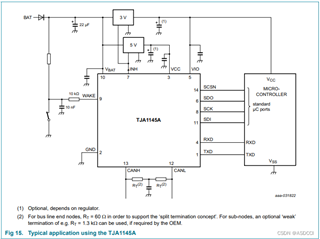Other Parts Discussed in Thread: AM62P,
Tool/software:
Hello, ti engineers
I can't find a specific description of what the wkup domain does.
My current understanding is that the first stage boot will start the DM(Device Managemen) program, the DM program contains the second boot and wkup application, it will be divided into two threads, one is to execute the second boot, it will boot the mcu application, and the other thread executes the wkup application.
Our current project is to use mcu to receive can messages and use soc chips to develop linux applications.
DM is not used now, DM only plays the role of boot loading.
The first question is that the DM in the current project is only the second boot, and no important application is executed on the DM. Does this go against your design vision? What is your purpose of designing wkup domain?
For mcu processing can messages and soc processing linux applications, wkup domain does not know how to develop now. For such project requirements, may I ask what your suggestions are?
The project will control mcu and soc sleep wake up according to the received can signal.I have seen the function of DM low power consumption. The second question is, is DM low power consumption the same function as mcu sleep.Is there a detailed introduction to the function of low power consumption of DM.
Another is to ask if it is the mcu that receives the can message that can control soc sleep
So the question to ask in summary is this
1, What is the function of wkup domain, is there a detailed introduction
2. According to my description, DM only plays a guiding role in the current project, and there are no important applications running on DM. Does this go against your design vision? What is your purpose of designing wkup domain?
3. For the mcu to process can messages, soc to process linux applications, mcu according to the received can messages to achieve such requirements as system sleep wake up, wkup domain does not know how to develop, for such project requirements, may I ask what your suggestions are, how to design the system?
4. Is the low-power function of wkup the same as the system sleep I said


